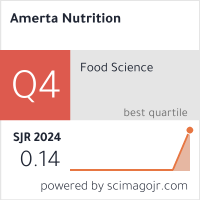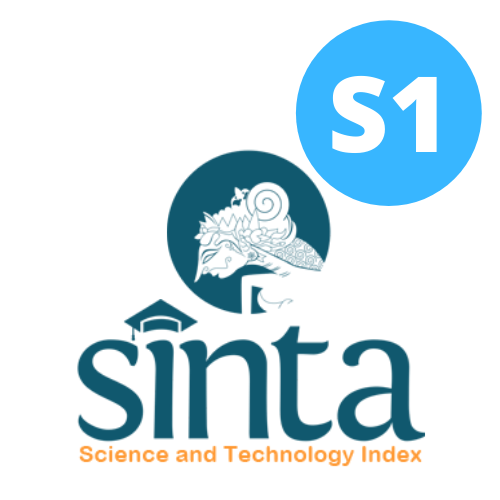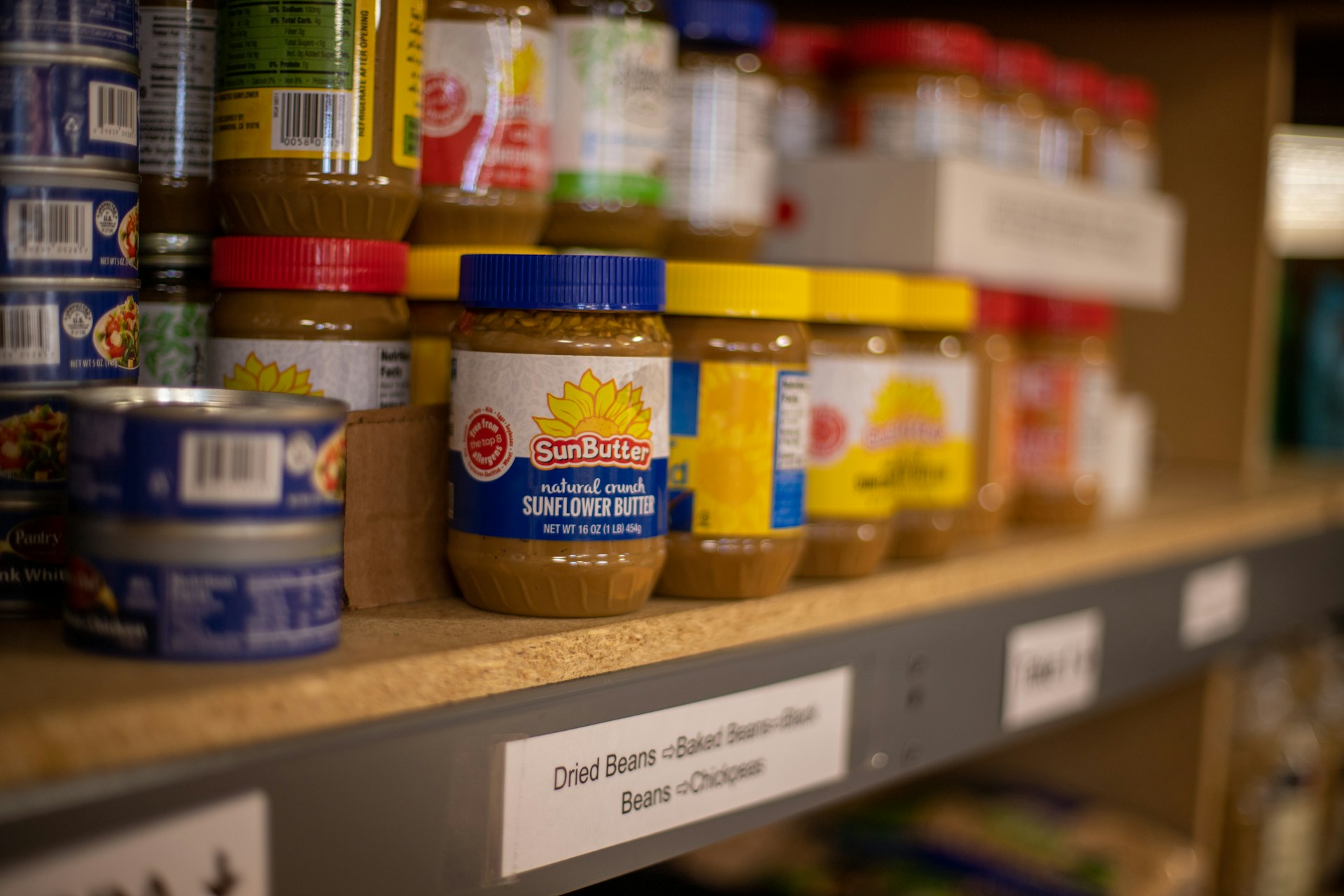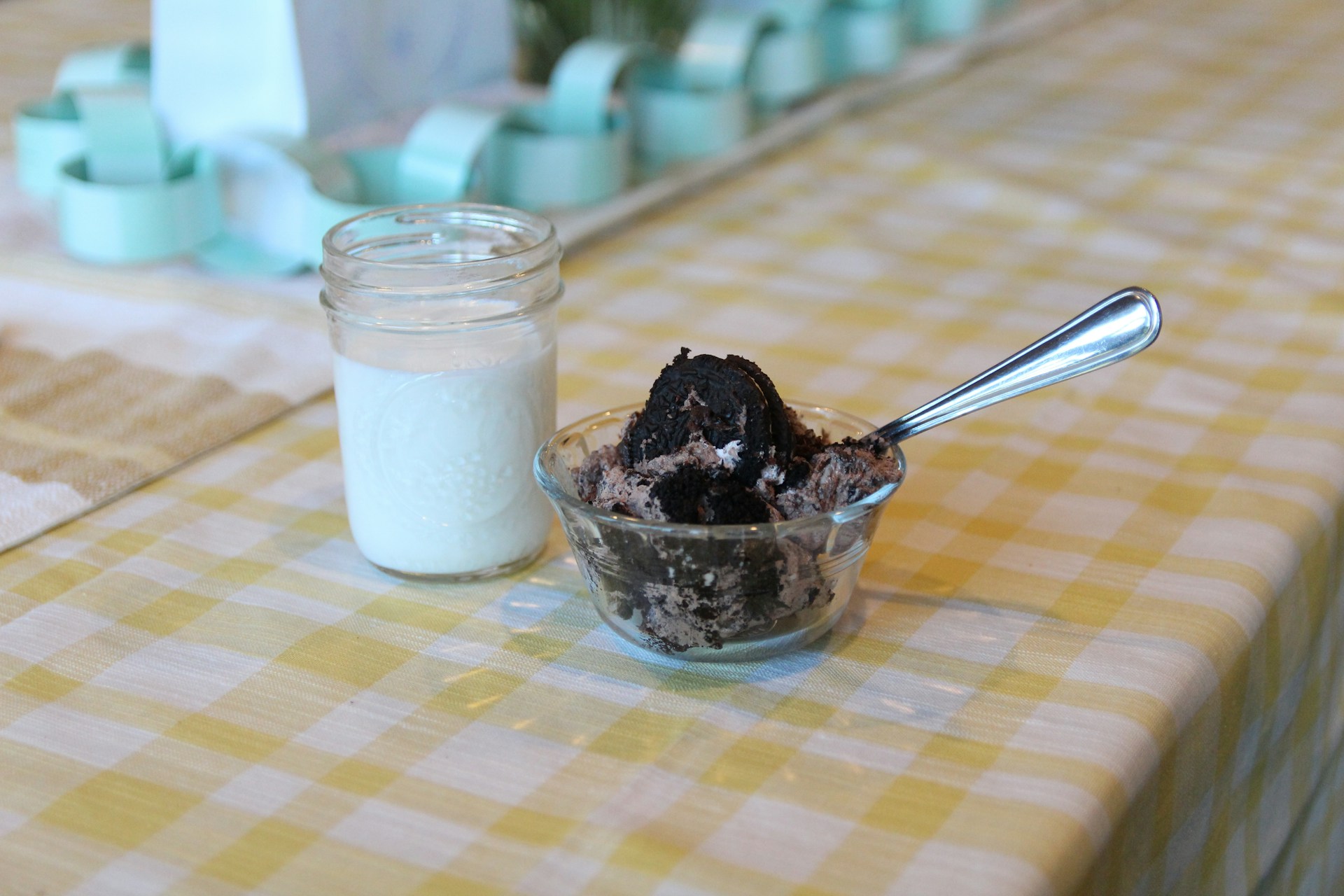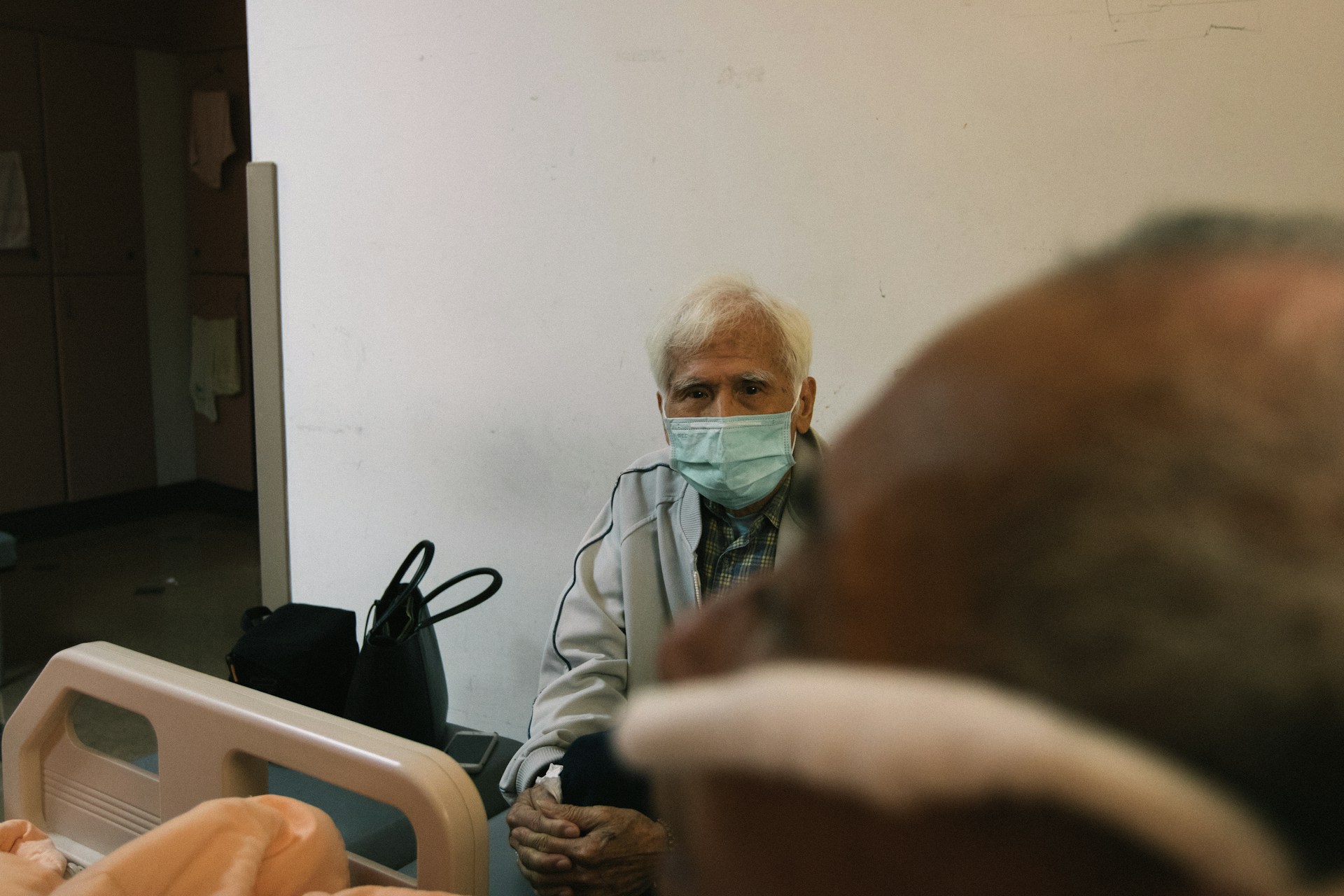The Effect of β-Carotene Supplementation on Triglyceride Levels Study on Type 2 Diabetes Mellitus Wistar Rats Fed High-Fat Diet and Induced Streptozotocin-Nicotinamide
Pengaruh Suplementasi β-Carotene terhadap Kadar Trigliserida Studi pada Tikus Wistar Diabetes Mellitus Tipe 2 yang Diberikan Pakan Tinggi Lemak dan Diinduksi Streptozotocin-Nicotinamide
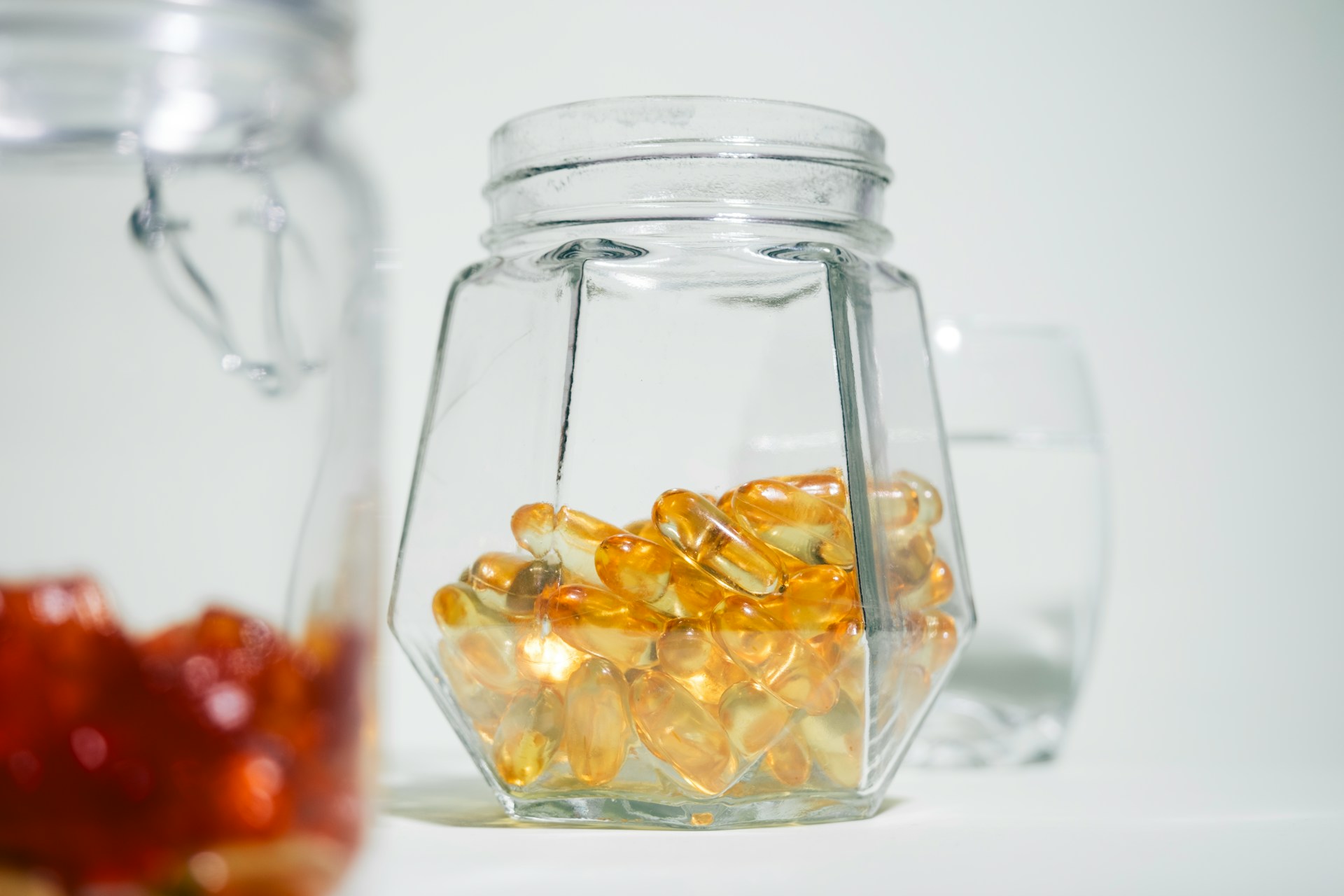
Background: Hypertriglyceridemia is associated with decreasing insulin sensitivity and increasing insulin resistance in type 2 diabetes mellitus. β-carotene has a cytoprotective effect that can improve and protect β-cells of the pancreas, resulting in increased insulin synthesis and secretion. β-carotene prevents the deleterious effects of uncontrolled glucose and lipid metabolism.
Objectives: This research aimed to investigate the effect of β-carotene supplementation on triglyceride levels in high-fat diet and streptozotocin-nicotinamide induced Type 2 Diabetes Mellitus Wistar Rats.
Methods: 18 Wistar rats were randomly divided into three groups: X1 (negative controls), X2 (positive controls), and X3 (STZ-NA+β-carotene 10 mg/KgBW). High-fat diet intervention was given 14 days before diabetic induction in X2 and X3 groups; the negative control group X1 was given standard feed. To condition Wistar rats to be type 2 Diabetes Mellitus, rats in groups X2 and X3 received intraperitoneal injections of Streptozotocin at a dose of 45 mg/KgBW and nicotinamide at a dose of 110 mg/kgBW. Supplementation of β-carotene was given by the nasogastric feeding tube method every 2 days within 30 days. Plasma Triglyceride levels were measured using GPO-PAP. The effect of triglyceride levels after β-carotene supplementation was tested with a statistical test using a paired t-test and one-way ANOVA.
Results: Blood glucose levels in groups X2 and X3 increased by 188.34 g/dl and 186.34 g/dl after being injected with STZ and NA. There was a significant effect of triglyceride levels (p-value<0.001) after supplementation with β-carotene at a dose of 10 mg/kgBW. Serum triglyceride levels decreased by a mean of 21.90% or 28.42 mg/dl.
Conclusions: This research revealed that the supplementation of β-carotene at a dose of 10 mg/kgBW every 2 days within 30 days by the nasogastric feeding tube method can lower triglyceride levels in diabetic Wistar rats.
Cole, J.B & Florez, J.C. Genetics of Diabetes Mellitus and Diabetes Complications. Nature Review Nephrology. 16, 377-390. (2020). https://doi.org/10.1038/s41581-020-0278-5
International Diabetes Federation (IDF). IDF Diabetes Atlas 10th Edition, International Diabetes Federation 2021. (2021). https://diabetesatlas.org/idfawp/resource-files/2021/07/IDF_Atlas_10th_Edition_2021.pdf
Ullah, A., Khan, A & Khan, I. Diabetes Mellitus and Oxidative Stress- A concise Review. Elsevier. Saudi Pharmaceutical Journal. 24, 547-553. (2016). https://doi.org/10.1016/j.jsps.2015.03.013
Mohieldein, AH., Hasan, M., Al-Harbi, K.K., Alodailah, S.S, Azahrani, R.M & Al-Mushawwah, S.A. Dyslipidemia and Reduced Total Antioxidant Status in Young Adult Saudis with Prediabetes. Diabetes Metab Syndr Clin Res Rev. 9, 287-91. (2015). https://doi.org/10.1016/j.dsx.2014.04.017
Hirano, T. Excess Triglycerides in Very Low-Density Lipoprotein (VLDL) Estimated from VLDL-Cholesterol could be a Useful Biomarker of Metabolic Dysfunction Associated with Stomatotic Liver Disease in Patients with Type 2 Diabetes. J Atheroscler Thromb. 31, 1-12. (2024). https://doi.org/10.5551/jat.65164
Indonesian Endrokinology Society (PERKENI). Guidelines for the Management and Prevention of Type 2 Diabetes Mellitus in Indonesia. Jakarta: PB PERKENI. (2021). https://pbperkeni.or.id/wp-content/uploads/2021/11/22-10-21-Website-Pedoman-Pengelolaan-dan-Pencegahan-DMT2-Ebook.pdf
Selvi, N.M.K., Nandhini, S., Sakthivadivel, V., Lokesh, Shanmugam, Srinivasan, A.B & Sumathi, S. Association of Triglyceride-Glucose Index (TyG index) with HbA1c and Insulin Resistance in Type 2 Diabetes Mellitus. MEDICA a Journal of Clinical Medicine. 16, 375-381. (2021). https://doi: 10.26574/maedica.2021.16.3.375
Forno, A.H.D., Camara, D., Parise, B., Rodrigues, C.F., Soares, J.J., Wagner, R., Ribeiro, S.R., Folmer, V., Puntel, R., Haas, S.E., Farias, F.M., Denardin, E.L.G., Denardin, C.C & Avila, D.S. Antioxidant and Lipid Lowering Effect of Dried fruits oil extract of Pterodon Emarginatusin Caenorhabditis elegans. Arabian Journal of Chemistry, 1-11 (2016). https://doi.org/10.1016/j.arabjc.2016.04.001
Marcelino, G., Machate, D.J., Freitas, K.D.C., Hiane, P.A., Maldonade, I.R., Pott, A., Asato, M.A., Candido, C.J., & Gumairaes, R.C.A. Beta Carotene: Preventive Role for Type 2 Diabetes Mellitus and Obesity: A Review. Molecules. 25, 5803. (2020). https://doi.org/10.3390/molecules25245803
Roohbakhsh, A., Kaarimi, G & Iranshahi, M. Carotenoids in the Treatment of Diabetes Mellitus and its Complications: A Mechanistic Review. Elsevier Biomedicine and Pharmacotherapy. 31-42 (2017). https://doi.org/10.1016/j.biopha.2017.04.057
Rajia, S., Yeasmin, M., Mostofa Kamal, A. H. M., & Khanam, K. Antidiabetic and Antihyperlipidemic Activity of β-carotene on Streptozotocin-induced Diabetic Rats. Journal of Pharmaceutical Research International. 32, 36-44. (2022). https://doi.10.9734/jpri/2022/v34i627283.
Ermawati, D., Rachmawati, B & Nyoman S.W. Effects of β carotene supplementation on total cholesterol, triglycerides, and malondialdehyde in diabetic Sprague dawley rats. Indonesian Journal of Nutrition. 2, 47-52. (2014). https://doi.org/10.14710/jgi.2.2.47-52
Ghasemi, A., Khalifi, S. & Jedi, S. Streptozotocin-Nicotinamide-Induced Rat Model of Type 2 Diabetes (Review). Acta Physiologica Hungarica. 101, 408-420. (2014). https://doi.org/10.1556/APhysiol.101.2014.4.2
Eluehike, N & Onoagbe, I. Changes in Organ and Body Weight, Serum Amylase and Antidiabetic Effects of Tannins from Spondias Mombin on Streptozotocin-induced Diabetic Rats. Sabinet African Journal. 3. (2018). https://hdl.handle.net/10520/EJC-13b8ee0f1f
Petchi, R.R., Vijaya, C & Parasuraman, S. Antidiabetic Activity of Polyherbal Formulation in Streptozotocin - Nicotinamide Induced Diabetic Wistar Rats. Journal of Traditional and Complementary Medicine Elsevier. 4, 108-117. (2014). https://doi.org/10.4103/2225-4110.126174
De Castro, U.G.M., Dos Santos, R.A.S., Silva, M.E., De Lima, W.G., Campagnole-santos, M.J & Alzamora, A.C. Age-dependent Effect of High-Fructose and High-Fat Diets on Lipid Metabolism and Lipid Accumulation in Liver and Kidney of Rats. Journal of Lipids in Health and Disease BioMed Central. 12, 1-11. (2013). https://doi.org/10.1186/1476-511X-12-136
Qi, Y & Wang, X. The Role of Gut Microbiota in High-Fat-Diet-Induced Diabetes: Lessons from Animal Models and Humans. MDPI Journals. 15, 922. (2023). https://doi.org/10.3390/nu15040922
Wang, Y., Fang, Y & Vrablik, M. Homeostasis Model Assessment for Insulin Resistance Mediates the Positive Association of Triglycerides with Diabetes. Diagnostics (Basel). 14, 733. (2024). https://doi. 10.3390/diagnostics14070733.
Wickramasinghe, A.S.D., Attanayajem A.P & Kalansuriya, P. Biochemical Characterization of High Fat Diet Fed and Low Dose Streptozotocin Induced Diabetic Wistar Rat Model. Journal of Pharmacological and Toxicological Methods. 113. (2022). https://doi.org/10.1016/j.vascn.2021.107144
Navarro, D.G., Sanchez, L.I., Pastrana, J.D., Fernandez, A.M., Martinez, J.A. Triglyceride-glucose index (TyG index) in Comparison with Fasting Plasma Glucose Improved Diabetes Prediction in Patients with Normal Fasting Glucose: The Vascular-Metabolic CUN Cohort. Preventive Medicine. 86, 99-105. (2016). https://doi.org/10.1016/j.ypmed.2016.01.022
Tahapary, D.L., Prastishita, L.B., Fitri, N.A., Marcella, C., Wafa, S., Kurniawan, F., Rizka, A., Tarigan, T.J., Harbuwono, D.S., Purnamasari & D., Soewondo, P. Challenges in the Diagnosis of Insulin Resistance: Focusing on the ole of HOMA-IR and Triglyceride/ Glucose Index. Diabetes & Metabolic Syndrome: Clinical Research & Reviews. 16, 8. (2022). https://doi.org/10.1016/j.dsx.2022.102581Get rights and content
Kusbandari, A., & Susanti, H. Beta-Carotene Content and Free Radical Capture Activity against DPPH (1,1-diphenyl 2-picrylhydrazyl) of Cantaloupe Fruit Extract (Cucumis melo var. Cantalupensis L.) by UV-Visible Spectophotometry. Journal of Pharmaceutical Science and Community. 14, 37-42. (2017). http://dx.doi.org/10.24071/jpsc.141562
Salem, S.A. Effect of two Carotenoids (Lycopene and β carotene) Supplementation on Hyperlipidemia and Lipid Peroxidation in Experimental Albino Rats. Journal of High Institute of Public Health. 45, 1-7. (2015). https://doi:10.21608/jhiph.2015.20262.
Qiu, Z., Chen, X., Geng, T., Wan, Z., Lu, Q., Li, L., Zhu, K., Zhang, X., Liu, Y., Lin, X., Chen, L., Shan, Z., Liu, L., Pan, Aliu, G. Associations of Serum Carotenoids with Risk of Cardiovascular Mortality Among Individuals with Type 2 Diabetes: Results From NHANES. Diabetes Care. 45, 1453-1461. (2022). https://doi.org/10.2337/dc21-2371.
Copyright (c) 2025 Amerta Nutrition

This work is licensed under a Creative Commons Attribution-ShareAlike 4.0 International License.
AMERTA NUTR by Unair is licensed under a Creative Commons Attribution-ShareAlike 4.0 International License.
1. The journal allows the author to hold the copyright of the article without restrictions.
2. The journal allows the author(s) to retain publishing rights without restrictions
3. The legal formal aspect of journal publication accessibility refers to Creative Commons Attribution Share-Alike (CC BY-SA).
4. The Creative Commons Attribution Share-Alike (CC BY-SA) license allows re-distribution and re-use of a licensed work on the conditions that the creator is appropriately credited and that any derivative work is made available under "the same, similar or a compatible license”. Other than the conditions mentioned above, the editorial board is not responsible for copyright violation.






